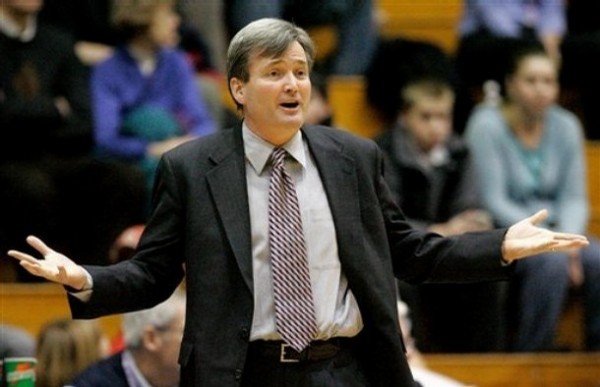Analyzing Northwestern’s Ups and Downs with the 1-3-1
Posted by KTrahan on January 29th, 2013In Northwestern’s last two games, we have seen the good and the bad of the 1-3-1 defense. Trailing Minnesota in the second half, the Wildcats rode the 1-3-1 to spark a run and upset the Gophers at home. Just three days later, Nebraska used hot three-point shooting against the zone to secure an upset win of its own against Northwestern. NU fans have a love-hate relationship with the 1-3-1. When it works, they love it. When it doesn’t work, well, Bill Carmody summed it up well: “You hit a three against the 1-3-1 and everyone is like, ‘Oh mom, the zone.’”
I broke down the 1-3-1 earlier this week, so you can check that out if you want more info on what exactly it is. Basically, it’s a way for the defense to try to trap the ball on the wings and force turnovers or low-percentage shots. However, it’s not meant to be used for entire games or against certain match-ups. Minnesota was a perfect match-up for the 1-3-1, though. The Gophers turn the ball over a lot and struggle shooting from outside. They couldn’t get the ball inside, and thus came up with too many empty possessions which allowed Northwestern to get additional fast break points. Nebraska, on the other hand, was a bad match-up for the 1-3-1. The Huskers, despite all their shortfalls, only have a turnover percentage of 17.6 percent, which is good for #33 in the country. Carmody tired to use the 1-3-1 to create turnovers against the Huskers and simultaneously spark a stagnant Northwestern offense, but Nebraska’s effective ball movement prevented those mistakes. The Cornhuskers, led by Ray Gallegos, started knocking down threes, helping them execute against the 1-3-1’s weakness.
Some fans used the Nebraska game as a reason why the 1-3-1 can’t work. “See, teams have figured it out,” they said. “Competent coaches can prepare for it.” While Tim Miles was well-prepared for the game, that wasn’t a sign that the 1-3-1 was a problem. Rather, Nebraska was simply a bad match-up for the zone. Similarly, Minnesota happened to be a good match-up for the 1-3-1. Don’t expect to see more or less of the 1-3-1 in the future based on what happened against Minnesota or Nebraska; expect to see it when a good match-up against Northwestern presents itself.
So will we see much of the 1-3-1 against Michigan? That’s tough to say. On paper, it looks like a terrible idea. The Wolverines only turn the ball over 15.4 percent of the time — good for #3 nationally — and rank seventh in the nation with a 40.8 percent three-point field goal percentage. In most cases, you’d expect a lot of man-to-man against that type of team. However, Michigan outplayed Northwestern in both man-to-man and the 1-3-1 the last time these two teams met, so it’s really a matter of picking your poison. Do you attempt to man up against arguably the best backcourt in the country or do you zone Michigan, hope the Wolverines commit some uncharacteristic errors, and pray for a bad shooting night? In truth, we’ll probably end up seeing some of both, but no matter what happens, it’s not the “fault” of the 1-3-1. It just might mean this wasn’t the best situation in which to use it.










































